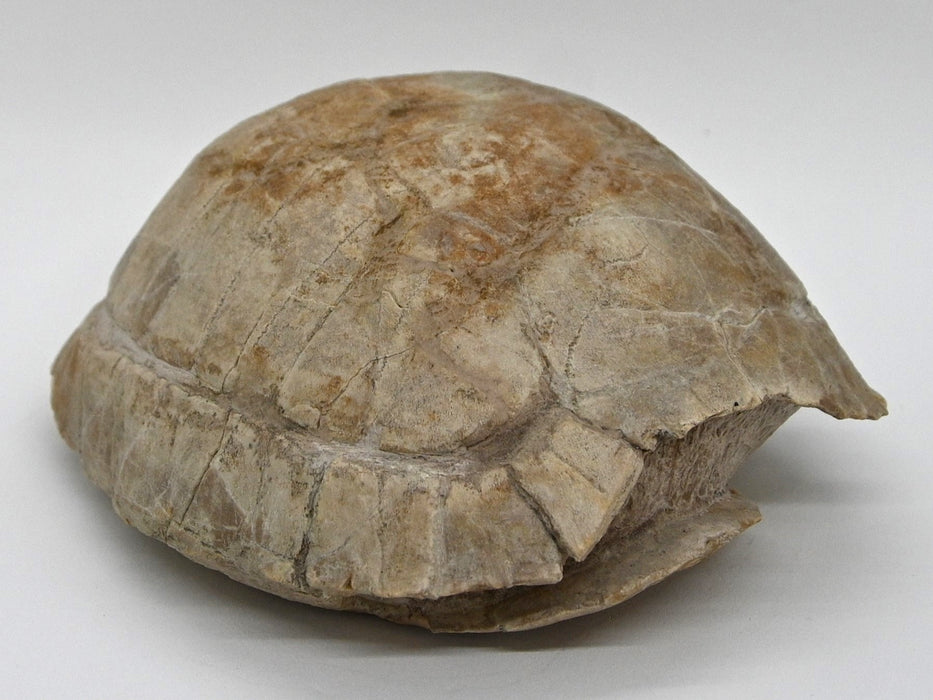
Fossil Tortoise | Stylemys nebrascensis | South Dakota
Stylemys nebrascensis
Oligocene (33 - 30 MYO)
Brule Formation
White River Badlands
South Dakota
Approx. Dimensions: 4.75" x 4" x 2.25"
Stylemys nebrascensis is an extinct species of land tortoise belonging to the family Testudinidae. It is one of the earliest known terrestrial tortoises in North America and dates to the late Eocene epoch. Fossils of Stylemys are commonly found in the White River Badlands and other sedimentary deposits of the Eocene-Oligocene transition across the central and western United States.
Morphology:
-
Carapace: The shell is high-domed, relatively smooth, and oval in outline, often reaching lengths of 30–40 cm in adult specimens. The carapace lacks prominent ornamentation but may show faint growth rings on the scutes.
-
Plastron (ventral shell): Broad and relatively flat with a solid bony structure, indicative of a fully terrestrial lifestyle. The gular scutes may project slightly forward.
-
Skull and Jaw: The skull is robust with strong jaw musculature. Stylemys lacked teeth and instead had a keratinous beak adapted for herbivory. The lower jaw features a prominent symphysis (midline fusion), forming a sturdy, shovel-like structure.
-
Limbs: The limbs are stout and columnar, particularly the forelimbs, which show evidence of strong claws and are interpreted as adaptations for digging and burrowing.
-
Tail: Short and conical, consistent with modern tortoises.
Stylemys nebrascensis likely inhabited warm, semi-arid to subtropical environments with abundant low-growing vegetation. Its anatomy suggests it was a grazer, feeding on tough plant material such as grasses, leaves, and possibly fruits. The presence of burrowing adaptations implies it may have dug shallow scrapes or burrows to escape heat or predators.
Stylemys is a key taxon in the study of tortoise evolution and is often used to track the transition of Testudinidae from aquatic or semi-aquatic ancestors to fully terrestrial lifestyles. It is also a common and iconic fossil in North American Eocene deposits, often well-preserved due to rapid burial in fluvial or ash-fall deposits.







